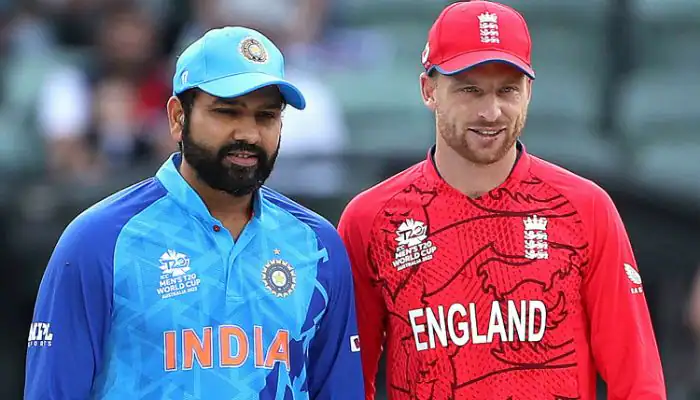
England Cricket Team vs India National Cricket Team The cricket rivalry between the England Cricket Team and the India National Cricket Team stands as one of the most storied and competitive in the sport. This ongoing contest has spanned decades, showcasing not only individual brilliance but also the evolution of cricketing strategies and team dynamics. Their matches, whether in Test, One Day International (ODI), or Twenty20 formats, have captivated audiences around the world and have become a significant part of cricket’s rich tapestry.
Historical Background
The origins of this cricketing rivalry can be traced back to 1932 when India played its first-ever Test match against England at Lord’s. This match was a monumental occasion for Indian cricket, marking its entry into the world of international Test England Cricket Team vs India National Cricket Team with its well-established cricketing traditions, was the first major opponent India faced, setting a precedent for a rivalry that would develop into one of the most enduring in the sport.
Initially, England dominated the encounters, reflecting their experience and cricketing pedigree. India, however, began to build its cricketing infrastructure and talent pool, gradually narrowing the gap and making the matches increasingly competitive. The early encounters laid the foundation for what would become a fiercely contested rivalry.
Pivotal Test Series
One of the most memorable series between these two teams was the 1971 Test series in England. This series was a watershed moment for Indian cricket, as it marked their first Test series win on English soil. Under the leadership of Ajit Wadekar, the Indian team produced a series of exceptional performances, with key contributions from players like Bishan Singh Bedi and Dilip Sardesai. Bedi’s spin bowling was instrumental in India’s success, and Sardesai’s batting played a crucial role in securing the series win. This victory was not just a triumph on the England Cricket Team vs India National Cricket Team field but a significant milestone in Indian cricket, symbolizing its emergence as a formidable Test-playing nation.
Another iconic series was the 2002 NatWest Series final at Lord’s, which is often remembered as one of the most thrilling One Day Internationals in history. India’s chase of 325 runs was highlighted by an exhilarating partnership between Sourav Ganguly and Rahul Dravid. Ganguly’s audacious celebration, waving his shirt from the balcony, became a lasting image of Indian cricket’s resilience and determination. This match was a testament to India’s ability to perform under pressure and added a new chapter to the ongoing rivalry with England.
Evolution with Limited-Overs Cricket
The introduction of limited-overs formats, especially Twenty20 (T20) cricket, brought a new dimension to the England-India cricketing rivalry. England Cricket Team vs India National Cricket Team, with its emphasis on quick scoring and dynamic play, has produced some of the most exciting and high-octane encounters between the two teams. The 2009 ICC T20 World Cup was a notable instance, where England’s victory over India in the group stage showcased the unpredictable nature of T20 cricket. England, led by Paul Collingwood, managed to overcome the defending champions in a match filled with explosive performances and strategic nuances.
In the ODI format, the rivalry has seen numerous engaging contests. The 2011 ODI series, which featured high-scoring games and competitive cricket, was another testament to the evolving nature of this rivalry. India and England’s encounters in the limited-overs formats have often been characterized by aggressive batting, innovative strategies, and thrilling finishes, reflecting the changing dynamics of modern cricket.
Strategic Contrasts
The strategic approaches of England and England Cricket Team vs India National Cricket Team in cricket have often highlighted contrasting styles of play. England’s traditional strengths lie in its pace and seam bowling, with English conditions often favoring fast bowlers. The ability of English bowlers to exploit the conditions and extract movement from the pitch has been a key factor in their success against India.
In contrast, India has leveraged its spin bowling capabilities, particularly on home soil. Indian pitches, known for their slower and turning conditions, provide significant assistance to spin bowlers. The strategic deployment of spinners such as Anil Kumble and Harbhajan Singh has been a hallmark of India’s approach in Test cricket. The contrast in playing styles—England’s pace versus India’s spin—has added depth and intrigue to their matches.
In the limited-overs formats, both teams have adapted their strategies to suit the demands of aggressive batting and rapid scoring. England’s approach in T20 and ODI formats is characterized by power hitting and innovative tactics, reflecting modern trends in cricket. India’s strategy, combining strong batting with effective bowling, has made their limited-overs encounters with England particularly thrilling and competitive.
Impact on Global Cricket
The matches between England Cricket Team vs India National Cricket Team have had a significant impact on global cricket, influencing trends and strategies worldwide. Their encounters often set benchmarks for high-quality cricket and innovative tactics, contributing to the evolution of the game. The rivalry has driven both teams to push their limits, resulting in some of the most memorable performances and exciting cricketing moments.
The global appeal of the England-India matches is reflected in the immense viewership and media attention they attract. These encounters are among the most anticipated and watched in international cricket, drawing fans from across the globe. The excitement surrounding these matches underscores the importance of this rivalry in the sport and its role in promoting cricket on a global scale.
Future Prospects
Looking ahead, the rivalry between England and India is poised to remain one of the most exciting in international cricket. Both teams are continually evolving, with new talent and changing dynamics promising to add fresh elements to their encounters. The future matches between England and India are expected to uphold the rich tradition of their rivalry, delivering high-quality cricket and engaging contests.
The ongoing evolution of cricket, combined with the competitive spirit of both teams, ensures that their future encounters will continue to captivate fans and add new chapters to their storied rivalry. The anticipation and excitement surrounding these matches will remain a key aspect of international cricket, contributing to the enduring England Cricket Team vs India National Cricket Team legacy of the England-India cricketing rivalry.
Conclusion
The England Cricket Team vs. India National Cricket Team rivalry is a celebration of cricket’s rich history and competitive spirit. From historic Test series and iconic ODIs to thrilling T20 encounters, their matches have produced some of the sport’s most memorable moments. The strategic contrasts, standout performances, and evolving dynamics of their encounters highlight the significance of this rivalry in the cricketing world. As both teams continue to compete and evolve, their future matches promise to uphold the legacy of their rivalry, England Cricket Team vs India National Cricket Team ensuring that the England-India cricketing contests remain a cornerstone of international cricket.



